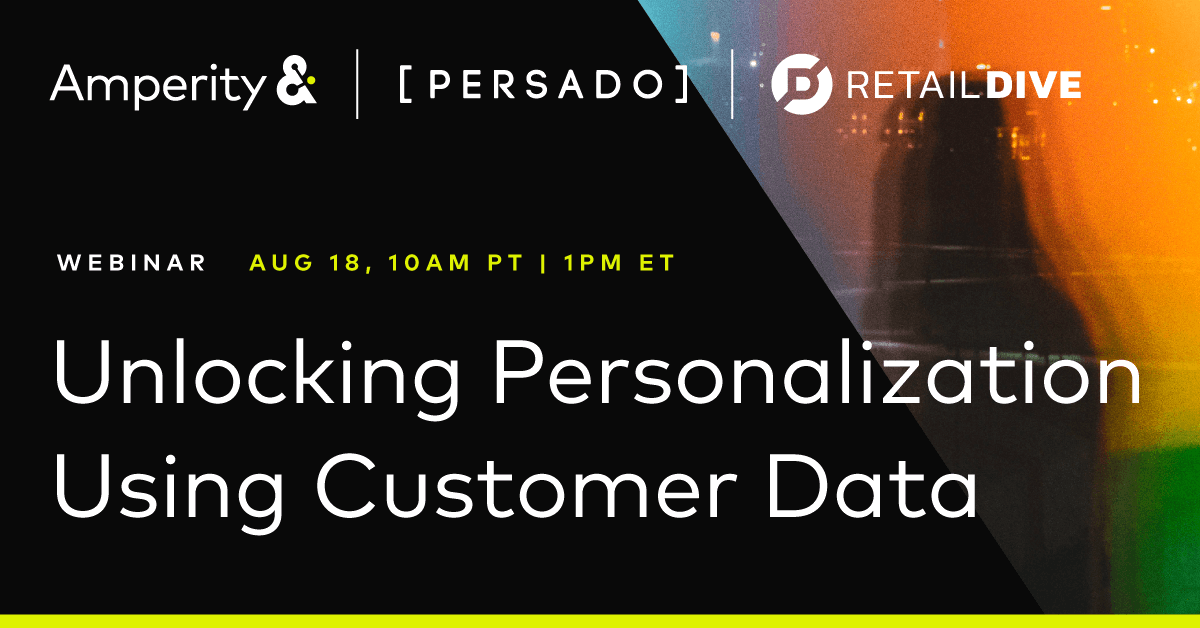December 21, 2022
5 Steps to Launch a Customer-Centric Marketing Strategy

COVID-19 changed consumer sentiment and behavior globally, resulting in new consumer preferences and habits. That was one of the key takeaways from a 2021 Boston Consulting Group (BCG) report, which also said that brands need to gain a data-driven understanding of what influences consumer choice. This understanding will help shape any customer-centric marketing strategy.
Brands should enable this strategy with fully automated, self-learning tools to predict customer demand. And they should use these tools to build hyper-personalized plans for each customer segment and individual.
But what exactly is customer-centric marketing? And how can brands launch a customer driven marketing strategy of their own?
Keep reading to find out.
What Is Customer Centric Marketing?
Customer centric marketing uses known and sensed customer pain points and priorities to define marketing outputs and priorities.
It’s a shift in thinking that puts the customer’s wants and needs at the center of all marketing decisions. Instead of treating customers as a single entity, customer centric marketing focuses on the needs of individual customers.
For example, businesses can analyze customer data and feedback to develop personalized experiences and share relevant product offerings. Customer-driven marketing aims to create long-term relationships by providing customers with the best possible experience.
It’s important to note that customer-centricity differs from customer service. Customer service is part of the customer experience, but it’s not the only piece.
A customer-centric approach encompasses the entire customer journey, from the first interaction to post-purchase follow-up.
What Is Driving the Need for Customer-centricity?
Consumers today have many choices and keeping them loyal is challenging.
To continually meet their expectations and increase the likelihood of repeat business, businesses must adopt a consumer-centric approach. This means understanding what motivates customers and how they prefer to engage with your brand.
The benefits of a customer centric approach can be significant. According to McKinsey, 78% of consumers surveyed say they are more likely to buy from a company if it offers personalized experiences.
Learn how AI can enable personalized digital marketing at scale.
How to Launch a Customer Centric Marketing Strategy
Brands can’t simply assume that the customers they have will stay loyal. They need to build loyalty motivations into the brand and its offerings. To do that, brands must see the world through the customer’s eyes.
Here are five steps to launching a customer-centric marketing strategy:
1. Get executive buy-in.
If executives are on board with customer-centricity, it will be easier to implement a customer-centric strategy.
Brands need to make a case for why customer-centricity is important and how it can benefit the business. Marketing leaders can gain executive buy-in by explaining how customer-centricity can increase customer loyalty and drive long-term growth. Another persuasive point is that customer-centricity can help differentiate one’s brand and increase customer lifetime value (CLV).
2. Collect and analyze first-party data.
With a better understanding of their customers, brand marketing teams can design experiences specifically for them using content that motivates them to take action.
First-party data provides insights into who the brand’s customers are, what they want, and how they behave. Teams can gain this data by:
- Reviewing inbound customer support emails and monitoring phone calls to understand how customers feel about their company.
- Interviewing customers to gain valuable insights into their experience with the company, what keeps them loyal, and what causes them to leave.
- Monitoring social media and setting up Google Alerts to see what people say about their business.
- Surveying customers about the quality of their product or service, company strengths, areas for improvement, and how they most interact with the brand.
- Using analytics tools to track customer behavior.
3. Segment the customer base.
Segmentation helps brands create targeted content and experiences for customers.
Use qualitative and quantitative data to build customer profiles and identify:
- Ideal customers
- Where they exist online
- What motivates them to buy or engage
4. Deliver hyper-personalized content.
Marketers can use the data they collect to create content that’s relevant to each customer.
It’s important to create content that will resonate with and motivate users across every touchpoint. The Persado Motivation AI platform can generate personalized communication that outperforms an organization’s human-generated copy 96% of the time.
With Persado, brands can determine what motivates customers to act. They can also improve their communication strategies by tapping into the world’s largest customer motivation knowledge base.
This will help brands understand message intent and emotional context to provide more targeted communications.
The Motivation AI does this by leveraging:
- A dataset of 1.2 billion consumers and 100 billion interactions annually to understand the structure of messages and their effects.
- Over 15 million proven performance-based messages annually — with a 20% growth rate — to constantly monitor consumer behavior.
- The equivalent of 645 years’ worth of A/B tests to perfect the art of motivation-focused language that elicits emotional responses and engagement.
Persado allows brands to generate a unique customer language profile that aligns with their brand voice. This makes it possible to maintain a consistent voice while delivering motivating messages with predictive content.
5. Analyze and refine.
Finally, brands need to analyze and refine their customer-centric strategy.
This means constantly collecting and analyzing data to see what’s working and what’s not. Based on the findings, brands can adjust their strategy to ensure customers always receive the best possible experience.
To do this, they need to:
- Monitor customer behavior and engagement across all touchpoints
- Analyze customer feedback to identify areas of improvement
- Test new content and experiences to see what works best
Following these steps, brands can launch a customer-centric content marketing strategy to help them better serve customers and meet their needs.
Persado is the only Motivation AI platform informed by what motivates customers to act. The platform leverages machine learning and a decision engine to refine language based on response data.
Learn more about how Motivation AI can help brands achieve an average 40 percent higher conversion rate from their campaigns.
Customer-Centric Marketing Examples
For some customer-centric marketing examples, consider the following:
Happy Scribe
Happy Scribe, a Barcelona-based startup, makes it easy for customers to transcribe audio and subtitle video content.
Known for its high accuracy, this AI-powered transcription software converts audio to text within minutes, making it an ideal solution for podcasters, reporters, and researchers looking to save time. Happy Scribe’s automated transcription services translate audio into 120 languages, dialects, and accents. The software also supports a wide range of audio formats.
Michaels
US arts and crafts retailer Michaels had been collecting customer data, but it struggled to form emotional connections with its artists and “makers.” The company partnered with Persado to find a better way to create more personalized messages.
Using the Persado Motivation AI language generation technology, Michaels produced engaging SMS content and subject lines that led to a 41% increase in clicks on its SMS campaigns.
Stitch Fix
Stitch Fix is an online personal styling service that uses AI-powered quizzes to identify customers’ style preferences and send them clothes they love. The company’s customer-centric approach has resulted in a loyal customer base of more than 3 million active clients.
Vanguard
Vanguard, an investment management company, saw a significant increase in conversions after using the Persado Motivation AI platform.
The company wanted to improve the number of views for its Vanguard Institutional posts on LinkedIn, as this is the only platform on which the brand advertises. After using the Persado AI to optimize posts, Vanguard saw a 15% increase in conversion rates.
Wayfair
Wayfair is a home decor and furniture retailer with a customer-centric marketing strategy revolving around customer experience.
The company uses predictive analytics and AI to make shopping easier and more enjoyable by creating detailed buyer personas. This allows customers to see the most relevant products, improving their overall experience.
Wayfair also offers a 3D room planner so customers can see how furniture will look in their space.
Achieve Customer-centricity at Scale
A customer oriented marketing strategy should be a top priority for any organization that wants to stay competitive in today’s market.
Following the steps outlined above, brands can launch a customer-centric marketing strategy and start reaping the rewards.
Looking for a platform to help take customer-centric marketing to the next level?
We’re ready to start a conversation.


